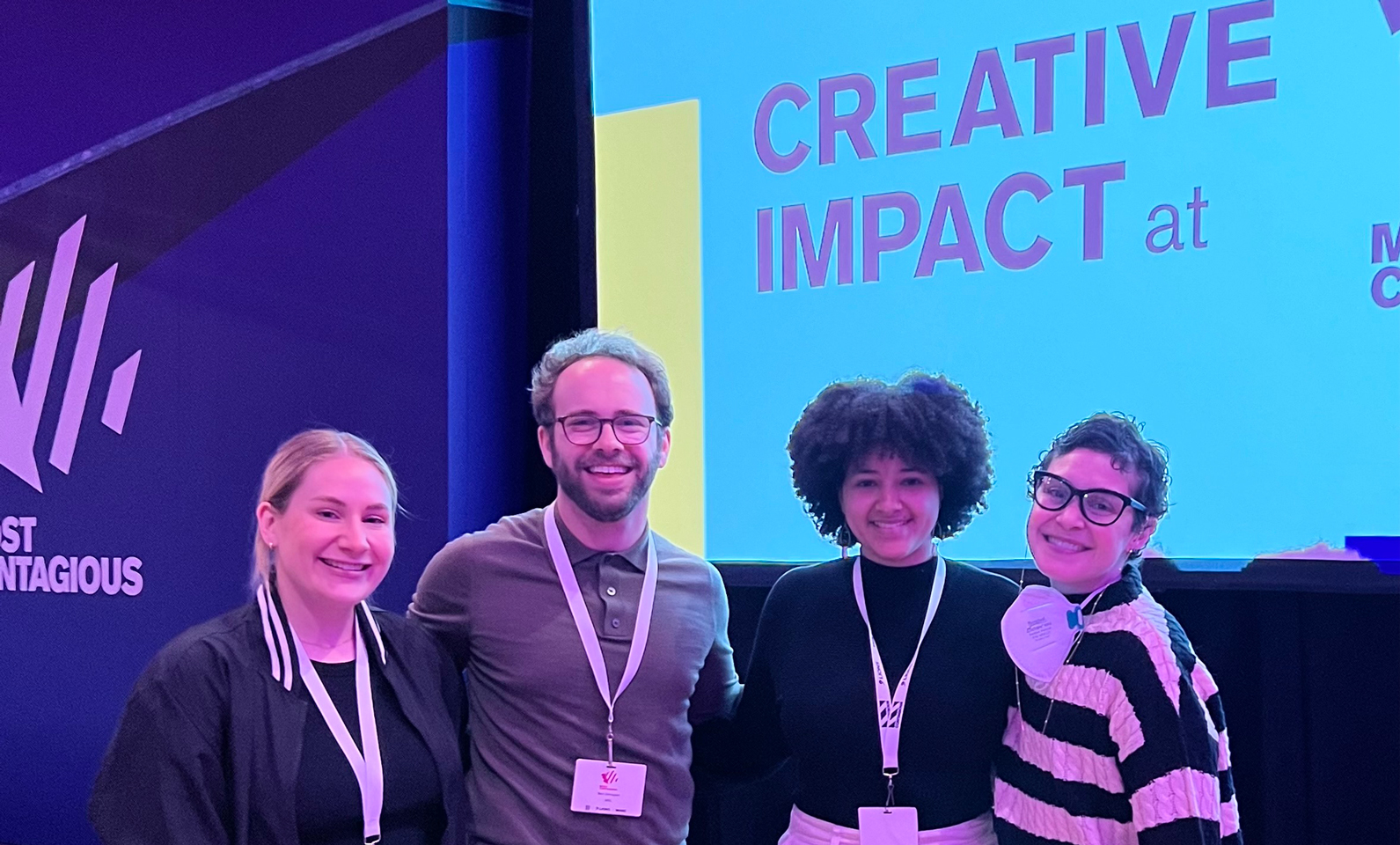By Ben Grinspan, VP of Cultural Strategy; Miranda Bukantz, Creative Strategist; Sarah Sanders, SVP, Creative Strategy; and Cheyenne Desrosiers, Senior Social Conversation Strategist
The Most Contagious Conference is an industry-leading creative conference, highlighting industry-shaping trends, strategies behind some of the world’s best campaigns and perspectives from global leaders and innovators. Our integrated team's experience was nothing short of inspirational.
Coming from different disciplines, our team highlighted the key insights and big ideas we’re taking back to MSL following the gathering last month:
Finding “Optimal Incongruity” to Move Culture Forward
Oxymorons can have a surprisingly powerful effect in marketing. Consider the concept of “optimal incongruity,” an idea shared at the conference by Contagious’ Principal Strategist Chris Barth: consumers are moved not by what’s “most right,” but instead by what stands out in the best way. Rather than see optimization and incongruity as intrinsic opposites, their real power comes in being brought together. The idea got me thinking on the optimal – incongruous scale how much effort we spend trying to do what is “optimal” and avoid what stands out – and how break though work needs to exist at both ends of this creative tension if it is to change people’s minds.
Defining Creative Ambition to Inspire Breakthrough Ideas
Creative is powerful...if you know how to use it talk about it.
Great companies take the time to deliberately define what creativity looks like for them and what it means for their business, then set a creative ambition against that definition. Understanding what great creativity means for their brand is an imperative for our industry. It’s important for us to partner with our clients to identify what they’re looking for when assessing work – what’re your creative objectives? And what’re the outcomes you’re looking for?
In an industry where words like “viral” and “breakthrough” get tossed around often, drilling down on our creative ambitions sets everyone up for success and helps us get to where we need to be quicker.
To Capture Attention, Show Intention
Fireworks get people’s attention; campfires bring people together. Capturing attention hinges on demonstrating clear intention. Contagious really showcased how in today’s marketing we’re so overly focused on JUST attention. So much so, homogeneous creative has become our current environment. We need to make an effort to meet consumers where they care.
Crafting a novel, compelling idea that leaves a lasting impact requires values, relevance, authenticity of message and clear *INTENTION,* so you not only grab attention but also establish a meaningful and long-lasting connection.
Seeking Out the Drivers of Culture
Trying to crack the code on marketing to Gen Z? Join the club.
Countless brands are searching for the best ways to connect with the elusive Gen Z consumer, and there’s one play that we’ll likely see a lot more of this year: tapping into subcultures.
As Dr. Marcus Collins enthusiastically explained in his session, culture is the measure of normality – and everything that’s normal today once started in subculture. By understanding how mainstream culture is shaped, we can better seek out drivers of change and carve out ownable spaces for brands in niche communities. Social-first brands like Duolingo are already applying this principle, tapping into K-Pop and anime fandoms to entertain consumers while showing them how language learning on their app can bring them closer to communities they identify with.
But why not just stick to mainstream culture if that’s what’s popular? Aside from literally every other brand trying to hop into these conversations, Gen Z is unique. These younger consumers are spending obscene amounts of time on social media apps like TikTok, where personalization is king and the idea of “mainstream culture” has been disrupted as each user sees something different on the For You Page. And from a consumer perspective, having a brand recognize and appreciate your niche interest can go a long way in forming positive associations and deeper connections with that brand.
